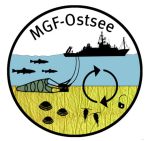

Marine Geophysics
The working group Marine Geophysics specializes in imaging the seafloor and the upper 50 meters of the subsurface. By integrating geophysical and sedimentological methods, we uncover insights into the dynamic processes shaping marine environments.
Our research focuses on enhancing marine remote sensing techniques to better understand and monitor geological and biological characteristics of shallow-water habitats. Other key areas include reconstructing the Pleistocene and Holocene evolution of sedimentary systems in marginal seas, driven by climate change and sea-level variations, as well as identifying sites of archaeological significance.
While much of our work is centered in the Baltic Sea, our research extends to the North Sea, the North Atlantic, and recently the Canary Islands, reflecting our commitment to advancing knowledge across diverse marine systems.
Senior Researchers
PostDocs
PhD Students
Students
Fritz Förschner

